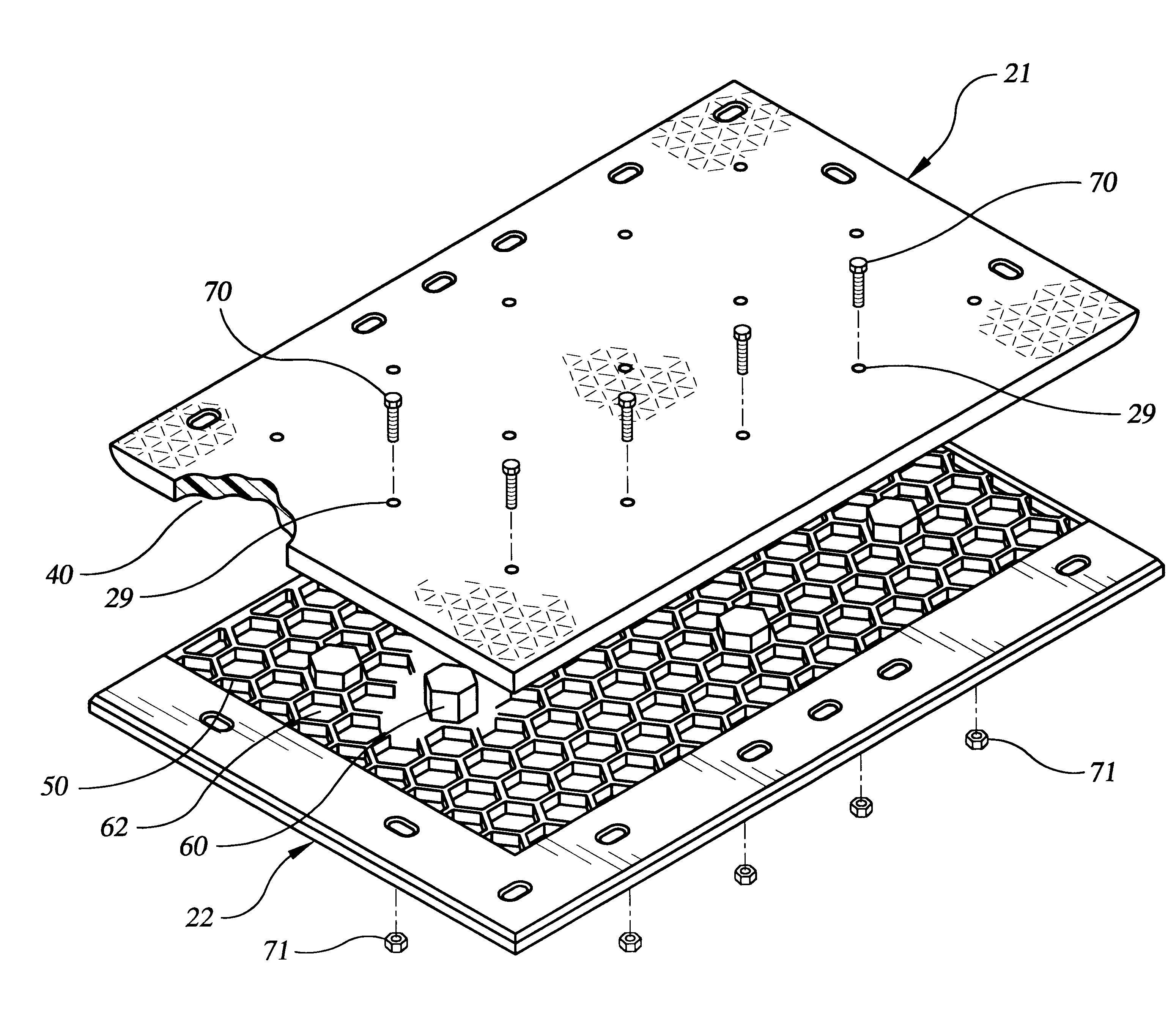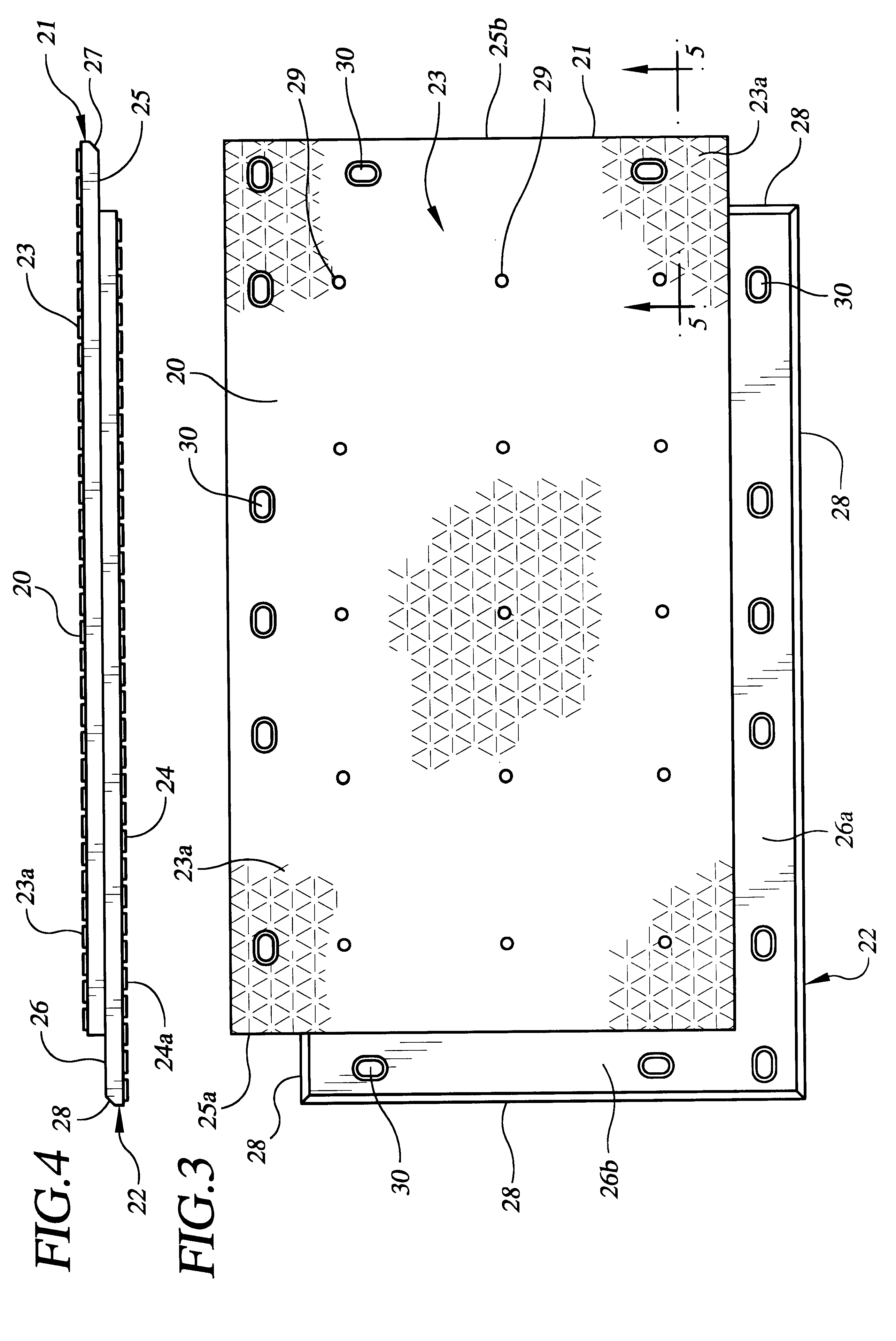Interlocking mat system for construction of load supporting surfaces
a technology of interlocking mats and supporting surfaces, which is applied in the direction of single unit paving, transportation and packaging, roads, etc., can solve the problems of affecting the construction efficiency of the roadway, the labor intensive use of wooden boards, and the inability to remove individual boards. , to achieve the effect of reducing the labor intensity and time-consuming and labor-intensive process, and reducing the cost of labor
- Summary
- Abstract
- Description
- Claims
- Application Information
AI Technical Summary
Benefits of technology
Problems solved by technology
Method used
Image
Examples
Embodiment Construction
In the preferred embodiment, the individual mats of the present invention are comprised of two mirror-image half-piece components which are affixed together to form a single mat. FIG. 1 depicts a half-piece component 10 of the present invention. In the preferred embodiment, an area of reduced material is in the form of open faced cellular structure, specifically a plurality of hexagonal honeycombs 12. Such open faced cellular structure is generally comprised of interconnected cell forming walls 13, which define said hexagonal honeycombs. In the preferred embodiment, said cell forming walls are integrally attached to a roughly continuous skin along one edge of said honeycombs, which in turn defines a generally planar work surface on one side of said half-piece. Two adjacent peripheral edges 14 and 15 of said half-piece 10 define areas having roughly continuous outer surfaces. Additionally, one or more recessed receptacles 16 are disposed through edges 14 and 15. A plurality of holes ...
PUM
| Property | Measurement | Unit |
|---|---|---|
| mechanical | aaaaa | aaaaa |
| density | aaaaa | aaaaa |
| durable | aaaaa | aaaaa |
Abstract
Description
Claims
Application Information
 Login to View More
Login to View More - R&D
- Intellectual Property
- Life Sciences
- Materials
- Tech Scout
- Unparalleled Data Quality
- Higher Quality Content
- 60% Fewer Hallucinations
Browse by: Latest US Patents, China's latest patents, Technical Efficacy Thesaurus, Application Domain, Technology Topic, Popular Technical Reports.
© 2025 PatSnap. All rights reserved.Legal|Privacy policy|Modern Slavery Act Transparency Statement|Sitemap|About US| Contact US: help@patsnap.com



